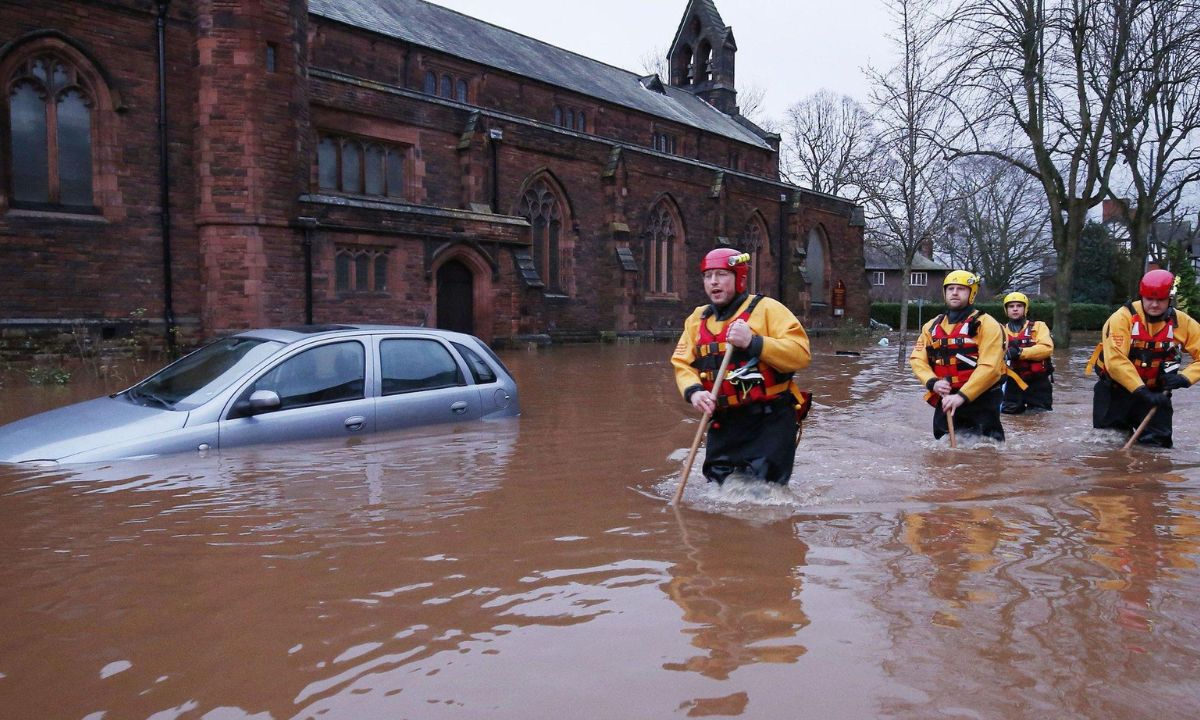
What caused the Lancaster Floods? The Lancaster Floods were triggered by a combination of heavy rainfall, rapid snowmelt, and inadequate drainage systems. These factors led to rivers and streams overflowing, causing widespread damage. The floods not only disrupted daily life but also highlighted the need for better infrastructure and emergency preparedness. Understanding the causes helps communities plan for future events and mitigate risks. In this post, we'll explore 25 intriguing facts about the Lancaster Floods, shedding light on their impact, the response efforts, and lessons learned. Get ready to dive into the history and aftermath of this significant event.
The Lancaster Floods: A Historical Overview
The Lancaster Floods have left an indelible mark on the history of the region. These floods have shaped the landscape, influenced local culture, and impacted countless lives. Here are some fascinating facts about these significant events.
- The Lancaster Floods have been recorded as far back as the 17th century, showing a long history of water-related challenges in the area.
- The most devastating flood in Lancaster's history occurred in 1947, causing widespread damage and displacing thousands of residents.
- Floods in Lancaster are primarily caused by the River Lune overflowing its banks during periods of heavy rainfall.
- The 1947 flood led to the construction of new flood defenses, including levees and floodwalls, to protect the city from future disasters.
- Lancaster's location in a valley makes it particularly susceptible to flooding, as water from surrounding hills drains into the area.
The Impact on the Community
Floods have a profound effect on the people living in Lancaster. From economic losses to emotional trauma, the community has faced numerous challenges due to these natural disasters.
- The 1947 flood caused an estimated £5 million in damages, a significant amount at the time.
- Many historic buildings in Lancaster have flood markers, indicating the highest water levels reached during various floods.
- Floods have led to the development of community support systems, with neighbors helping each other rebuild and recover.
- Local schools often include flood history in their curriculum, teaching students about the importance of preparedness and resilience.
- The Lancaster Flood Relief Fund was established to provide financial assistance to those affected by floods, helping them get back on their feet.
Environmental Consequences
Floods not only impact human lives but also have significant environmental consequences. The natural landscape of Lancaster has been altered by these events.
- Floods can lead to soil erosion, which affects local agriculture and reduces the fertility of the land.
- The River Lune's ecosystem is disrupted during floods, impacting fish populations and other aquatic life.
- Floodwaters can carry pollutants from urban areas into natural waterways, harming wildlife and plant life.
- Wetlands around Lancaster act as natural flood buffers, absorbing excess water and reducing the severity of floods.
- Reforestation efforts have been implemented to help stabilize the soil and reduce the risk of future floods.
Technological Advances in Flood Management
Over the years, advancements in technology have improved flood prediction and management in Lancaster. These innovations have helped mitigate the impact of floods on the community.
- Modern weather forecasting systems provide early warnings of potential floods, giving residents time to prepare and evacuate if necessary.
- The installation of automated floodgates along the River Lune helps control water flow and prevent overflow during heavy rains.
- Drones are used to monitor flood-prone areas, providing real-time data to emergency response teams.
- Advanced mapping technology helps identify areas at high risk of flooding, allowing for better urban planning and infrastructure development.
- The use of permeable pavement in urban areas helps reduce surface runoff, decreasing the likelihood of floods.
Personal Stories and Anecdotes
The Lancaster Floods have touched the lives of many individuals, each with their own unique experiences and stories to tell.
- One resident recalls how their family home was completely submerged during the 1947 flood, forcing them to rebuild from scratch.
- A local business owner shares how their shop was saved by sandbags and the quick actions of neighbors during a recent flood.
- An elderly couple recounts how they were rescued by boat during a particularly severe flood, highlighting the bravery of emergency responders.
- A schoolteacher describes how students came together to create a flood awareness campaign, educating their peers about safety measures.
- A farmer explains how they adapted their farming practices to cope with the changing landscape caused by frequent floods.
The Lasting Impact of Lancaster Floods
The Lancaster Floods left a significant mark on the community. Homes were destroyed, businesses suffered, and lives were disrupted. Despite the devastation, the resilience of the Lancaster residents shone through. They banded together, showing incredible strength and unity in the face of adversity.
Emergency services worked tirelessly, providing aid and support to those affected. The floods also highlighted the importance of disaster preparedness and the need for improved infrastructure to prevent future calamities.
Local authorities and organizations have since implemented measures to mitigate the impact of such events. Flood defenses have been strengthened, and awareness campaigns have been launched to educate the public on safety protocols.
The Lancaster Floods serve as a reminder of nature's power and the importance of community spirit. Through collective efforts, Lancaster continues to rebuild and move forward, stronger than ever.
Was this page helpful?
Our commitment to delivering trustworthy and engaging content is at the heart of what we do. Each fact on our site is contributed by real users like you, bringing a wealth of diverse insights and information. To ensure the highest standards of accuracy and reliability, our dedicated editors meticulously review each submission. This process guarantees that the facts we share are not only fascinating but also credible. Trust in our commitment to quality and authenticity as you explore and learn with us.
